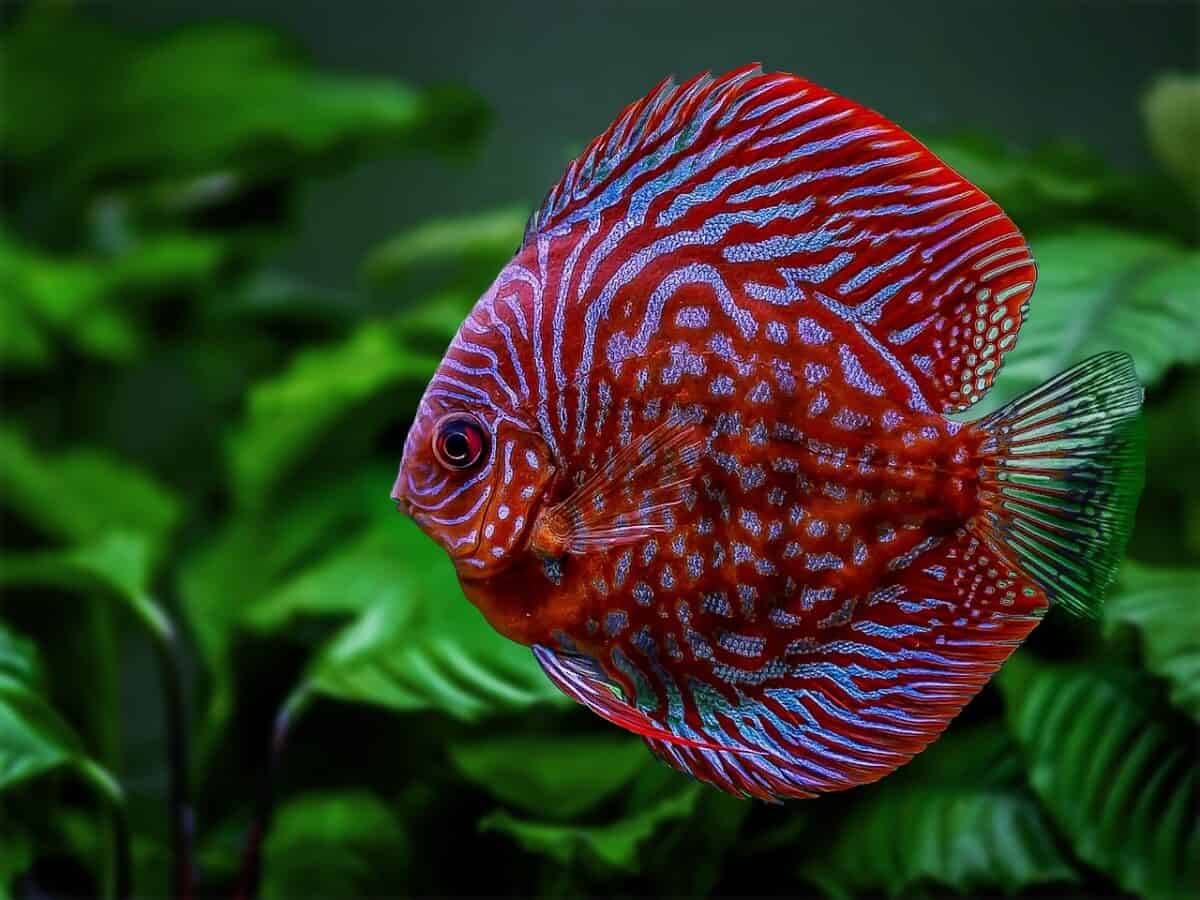Welcome to animals that start with D. We compiled a list of these animals that are found around the world – even close to you! So let’s get going and have a look at the animals that start with D list, shall we?
You can read the entire article or jump to any section below.
Overview of animals that start with D
1. Dung Beetle
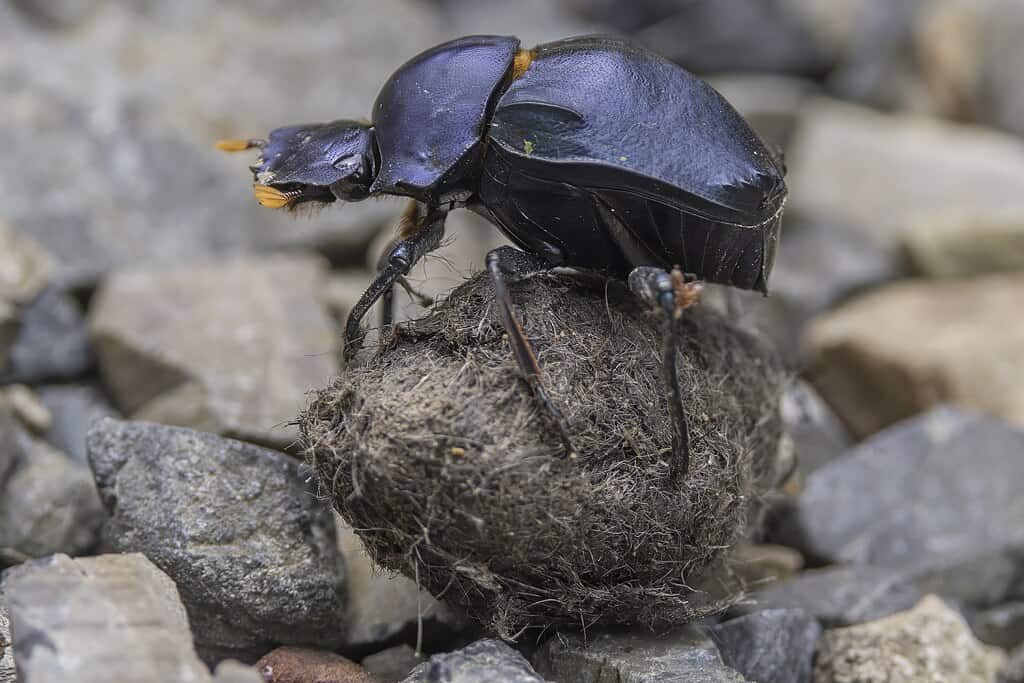
| Scientific Name | Scarabaeidae family |
| Where it Lives | Worldwide, primarily in grasslands, forests, and savannas |
| What it Eats | Detritivores, primarily feed on dung from mammals |
| Conservation Status | Not assessed for all species |
Fun Fact: Dung beetles might be able to orient themselves using the stars of the Milky Way.
Dung Beetles are also known as the scarab. This beetle is famous for its penchant for rolling excrement from place to place.
These animals are picky about their food, as they do not eat just any random pile of feces.
2. Duck

| Scientific Name | Anatidae family |
| Where it Lives | Diverse habitats including lakes, rivers, wetlands, and coastal regions |
| What they Eat | Omnivorous, feeding on aquatic plants, insects, small fish, and crustaceans |
| Conservation Status | Varies by species, some are of least concern while others may be threatened due to habitat loss and hunting |
Fun Fact: Ducks can sleep with one eye open for protection.
Ducks can be found on every continent but Antarctica. Ducks have webbed feet and waterproof feathers to survive in their near-aquatic habitats.
They are omnivores that eat fish, crustaceans, insects, and seeds.
3. Drumfish
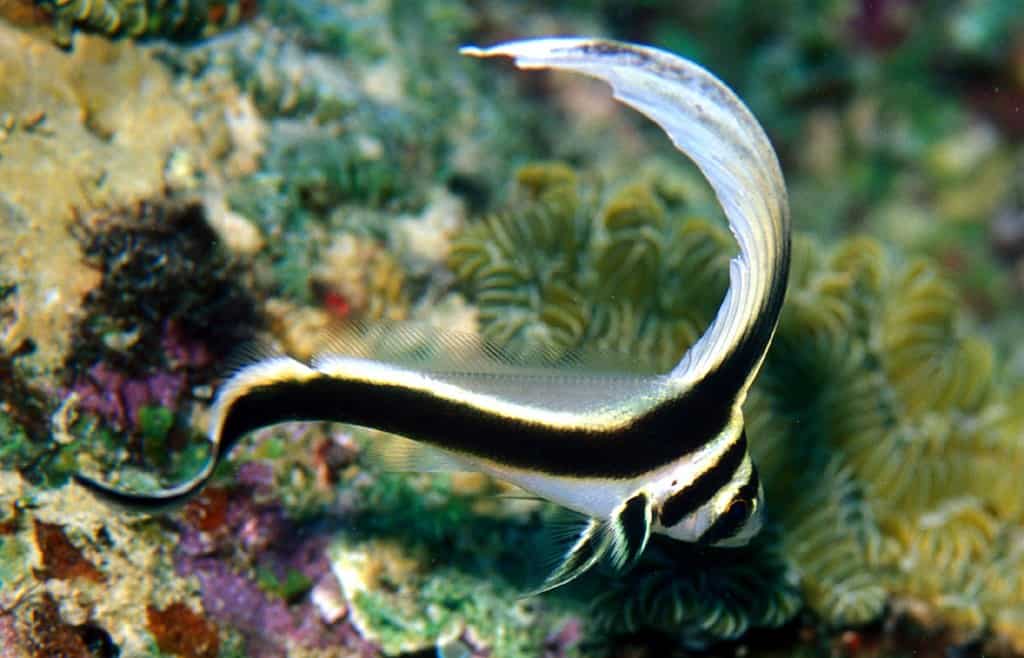
| Scientific Name | Sciaenidae family |
| Where it Lives | Found in coastal waters, estuaries, and along sandy or muddy bottoms |
| What they Eat | Carnivorous, feeding on small fish, crustaceans, and mollusks |
| Conservation Status | Not assessed for all species, but some may be impacted by overfishing and habitat degradation |
Fun Fact: Drumfishes get their names from the loud drum-like sounds they make with their swim bladders.
Drumfishes are usually found in saltwater, but some species live in freshwater. The saltwater species are generally larger than their freshwater counterparts.
The Drumfish is bottom-dwelling and feeds on crustaceans, fishes, and insects along lake floors.
4. Dragonfish
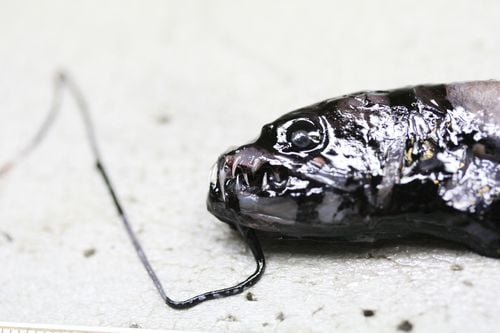
| Scientific Name | Family Stomiidae |
| Where it Lives | Deep-sea environments, primarily in oceanic waters |
| What it Eats | Carnivorous, feeding on small fish and crustaceans |
| Conservation Status | Not assessed |
Fun Fact: Dragonfishes have red chlorophyll in their eyes, with which they attract prey.
Dragonfish get their name from their fearsome appearance. Dragonfishes have large heads, broad jaws, and terrifying teeth.
Male Dragonfishes are nearly ten times the size of females. Most of them don’t have scales.
5. Draco Volans Lizard
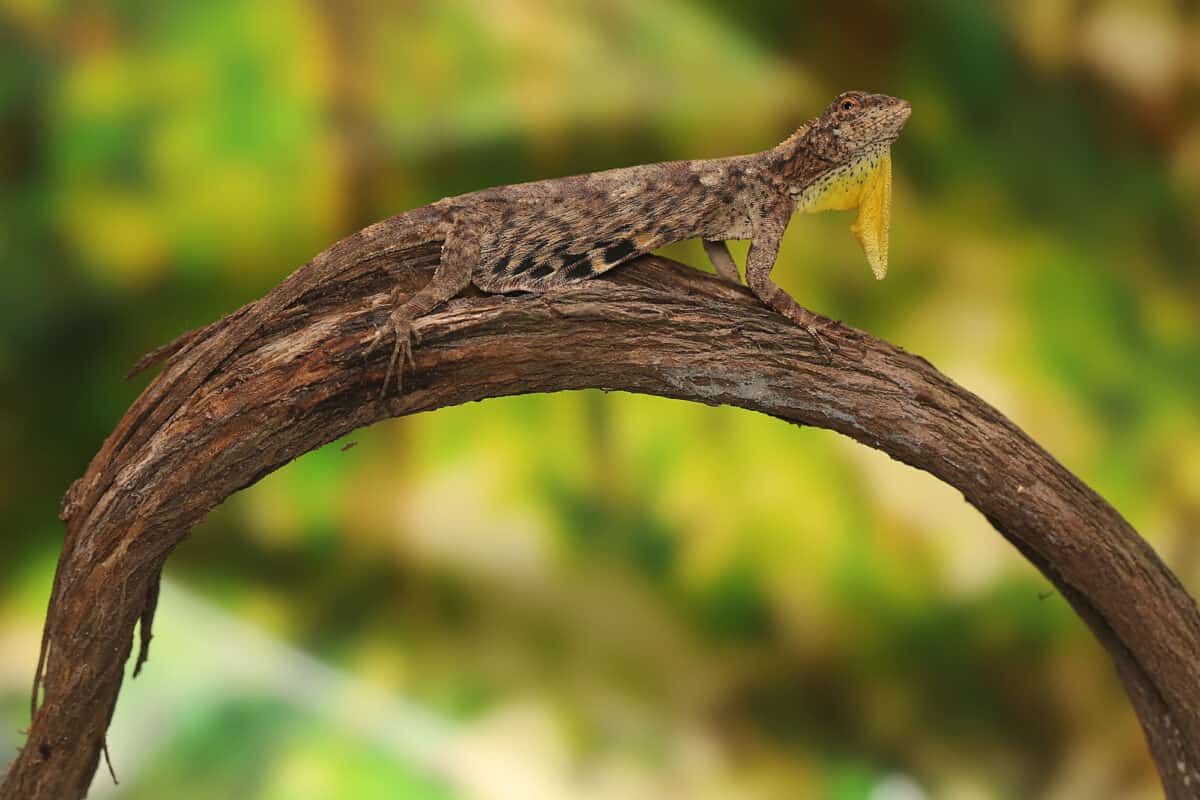
| Scientific Name | Draco volans |
| Where it Lives | Southeast Asia, primarily in tropical forests |
| What it Eats | Insectivorous, feeds on ants and other small insects |
| Conservation Status | Not assessed |
Fun Fact: Draco Volans Lizards can glide for about 26 feet.
Draco Volans is Latin for flying dragon. This lizard has a winglike membrane supported by its ribs. But the Draco Volans Lizard doesn’t really fly. Instead, it glides.
These lizards spend most of their days in trees, and the males are territorial.
6. Douc

| Scientific Name | Pygathrix spp. |
| Where it Lives | Southeast Asia, primarily in tropical forests |
| What it Eats | Herbivorous, primarily feeds on leaves, fruits, and flowers |
| Conservation Status | Varies by species, some are endangered due to habitat loss and hunting |
Fun Fact: Douc populations were drastically affected by the Vietnam War and have yet to be replenished.
Douc monkeys can be found in Indochina and can be called a langur. It is one of the most colorful monkeys globally, with coats in white, red, and gray shades.
7. Donkey

| Scientific Name | Equus africanus asinus |
| Where it Lives | Worldwide, domesticated in various regions |
| What it Eats | Herbivorous, mainly graze on grasses and forage |
| Conservation Status | Not assessed |
Fun Fact: Donkeys can bond to other farm animals, and separating a bonded donkey can lead to death.
Donkeys have been domesticated for more than 5000 years. They can be seen in almost all parts of the world.
Donkeys used to be called asses until the word fell out of use —for obvious reasons.
8. Dolphin
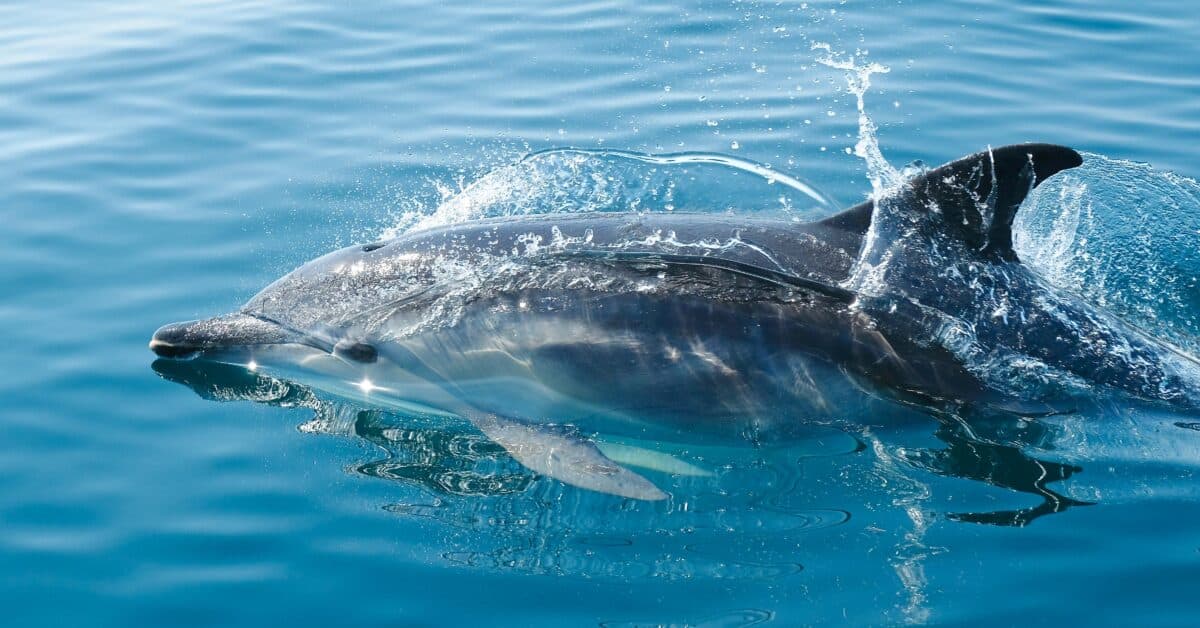
| Scientific Name | Delphinidae spp. |
| Where it Lives | Oceans worldwide, often found in coastal regions |
| What it Eats | Carnivorous, feeding on fish, squid, and crustaceans |
| Conservation Status | Varies by species, some are threatened by habitat loss and fishing activities |
Fun Fact: Dolphin brains are larger than those of humans.
Dolphins are known to be playful, intelligent sea mammals. But if you don’t, you’re in for a treat. These animals are so smart that some have been trained to help humans even as early as the 1960s
9. Discus

| Scientific Name | Symphysodon spp. |
| Where it Lives | South America, primarily in the Amazon River basin |
| What it Eats | Omnivorous, feeding on small invertebrates, algae, and plant matter |
| Conservation Status | Not assessed |
Fun Fact: The Discus can change colors based on environmental conditions and mood.
Discus are fish that mainly live in the waters of the Amazon basin. They are colorful and quite popular as aquarium fishes for that.
10. Dingo

| Scientific Name | Canis lupus dingo |
| Where it Lives | Found primarily in Australia, across various habitats including forests, deserts, and grasslands |
| What it Eats | Carnivorous, primarily hunting small mammals, birds, and sometimes scavenging on carrion |
| Conservation Status | Not assessed |
Fun Fact: Only the alpha male and female Dingoes can mate in a pack.
Dingoes are indigenous wild dogs found on the Australian continent. These dogs exhibit the pack mentality and hunting styles of the wolf.
11. Dik-Dik
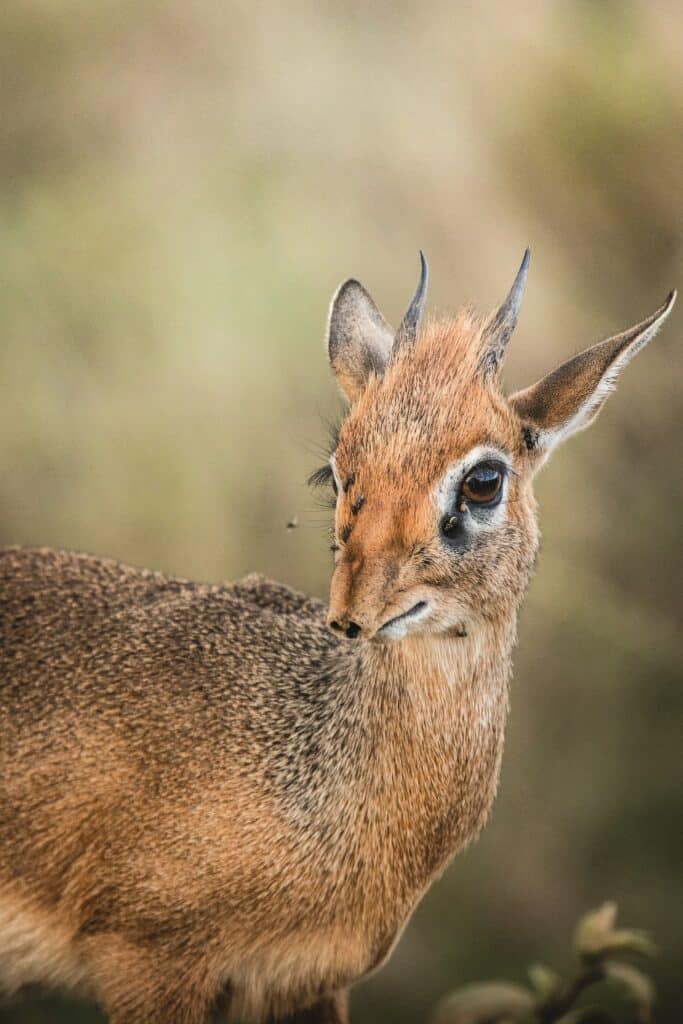
| Scientific Name | Madoqua genus spp. |
| Where it Lives | Found in eastern and southern Africa, primarily in savannas and bushlands |
| What it Eats | Herbivorous, feeding on leaves, shoots, fruits, and flowers |
| Conservation Status | Varies by species, some are of least concern while others may be threatened by habitat loss and hunting |
Fun Fact: Dik-Diks are territorial and mark their turf with a liquid produced in sacs near their eyes.
Dik-diks can be found in Africa. The Dik-Dik is usually about 12-16 inches in height and may weigh as little as 15 pounds.
12. Dhole

| Scientific Name | Cuon alpinus |
| Where it Lives | Found in various regions of Asia, including forests and grasslands |
| What it Eats | Carnivorous, primarily hunting small to medium-sized prey such as deer and boar |
| Conservation Status | Endangered |
Fun Fact: An adult Dhole can gorge itself on meat, then regurgitate it later to feed members of its pack.
Dholes are wild dogs that look like a cross between a gray wolf and a red fox. Dholes used to be widespread, but now, they can only be found in parts of Asia.
13. Devil’s Coach Horse Beetle

| Scientific Name | Ocypus olens |
| Where it Lives | Found in Europe, particularly in wooded areas and gardens |
| What it Eats | Carnivorous, preys on insects and other invertebrates |
| Conservation Status | Not assessed |
Fun Fact: Devil’s Coach Horse Beetles can release an unpleasant gas as a defense mechanism against predators.
Devil’s Coach Horse Beetle has a name that is indicative of its interesting history. During the Middle Ages, people believed that this beetle could curse someone by pointing its tail in their direction.
Its fearsome appearance and painful bite may be the source of the superstition.
14. Desert Rain Frog
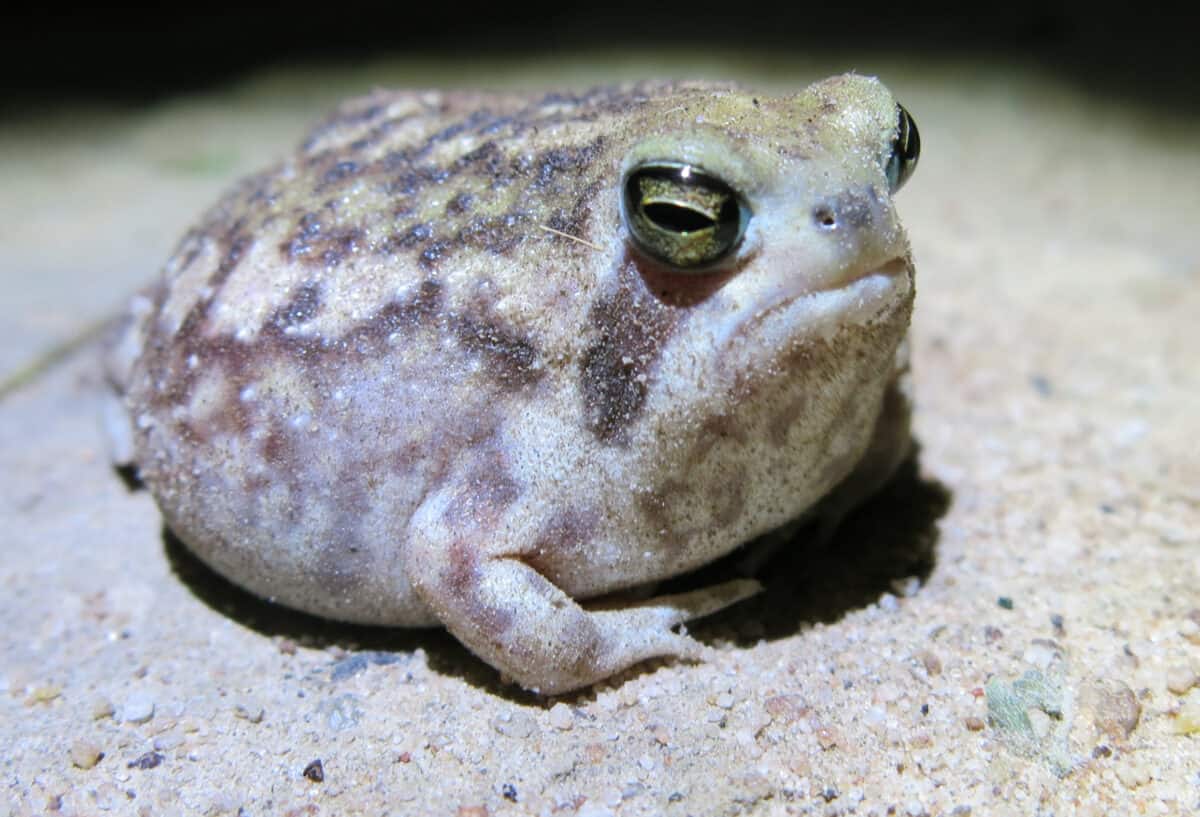
| Scientific Name | Breviceps macrops |
| Where it Lives | Endemic to the Namib Desert in southern Africa |
| What it Eats | Insectivorous, feeding on small insects and arthropods |
| Conservation Status | Data Deficient |
Fun Fact: Desert Rain frogs don’t drink water. Instead, they absorb it through their skin.
Desert Rain frogs have distinctive and unique transparent skin. These animals usually live underneath the sand in South Africa and Namibia.
Desert Rain frogs can’t hop.
15. Desert Locust

| Scientific Name | Schistocerca gregaria |
| Where it Lives | Found in desert regions of Africa, the Middle East, and Southwest Asia |
| What it Eats | Polyphagous, feeding on a wide variety of crops and vegetation |
| Conservation Status | Not assessed |
Fun Fact: Locusts change colors when they gather, going from neutral shades to bright yellow.
Desert Locusts are similar to grasshoppers with their long hind legs and compound eyes, and are locusts capable of moving in swarms at speeds up to 21 miles per hour.
They can gather in groups of approximately 80 million, swiftly devouring entire grain fields within hours.
16. Deathwatch Beetle
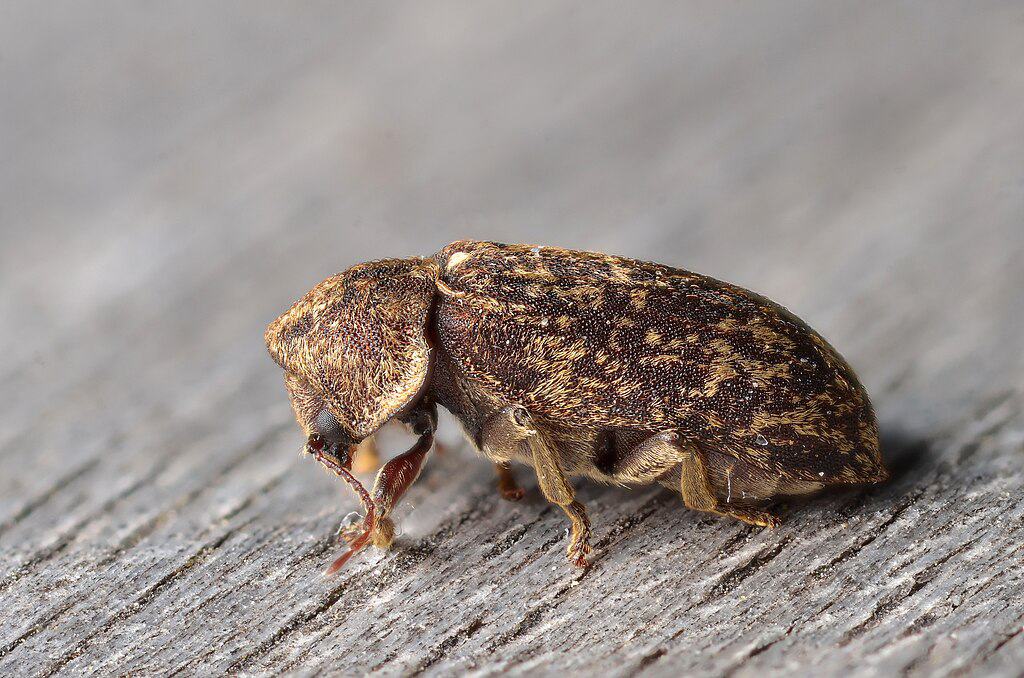
| Scientific Name | Xestobium rufovillosum |
| Where it Lives | Found in various regions worldwide, often infesting timber structures |
| What it Eats | Wood-boring, feeding on seasoned hardwoods like oak and chestnut |
| Conservation Status | Not assessed |
Fun Fact: The lifespan of an adult Deathwatch Beetle is just two months.
Deathwatch Beetle’s tapping on wooden walls used to be seen as an omen of death. But it is just a mating ritual.
The male Deathwatch Beetle taps on the wood and the female responds. They keep doing this till the male finds the female by tracing the direction of the taps.
17. Death’s Head Cockroach

| Scientific Name | Blaberus craniifer |
| Where it Lives | Native to Central and South America, commonly found in tropical forests |
| What it Eats | Omnivorous, feeding on decaying organic matter, fruits, and vegetation |
| Conservation Status | Not assessed |
Fun Fact: Death’s Head Cockroaches can live up to a year.
Death’s Head Cockroach is one insect that serves as a pet to some animal lovers. The Death’s Head Cockroach is native to the Caribbean, Central America, and Mexico.
These cockroaches can get up to two inches long. It gets its name from the black markings on its thorax.
18. Darwin’s Frog
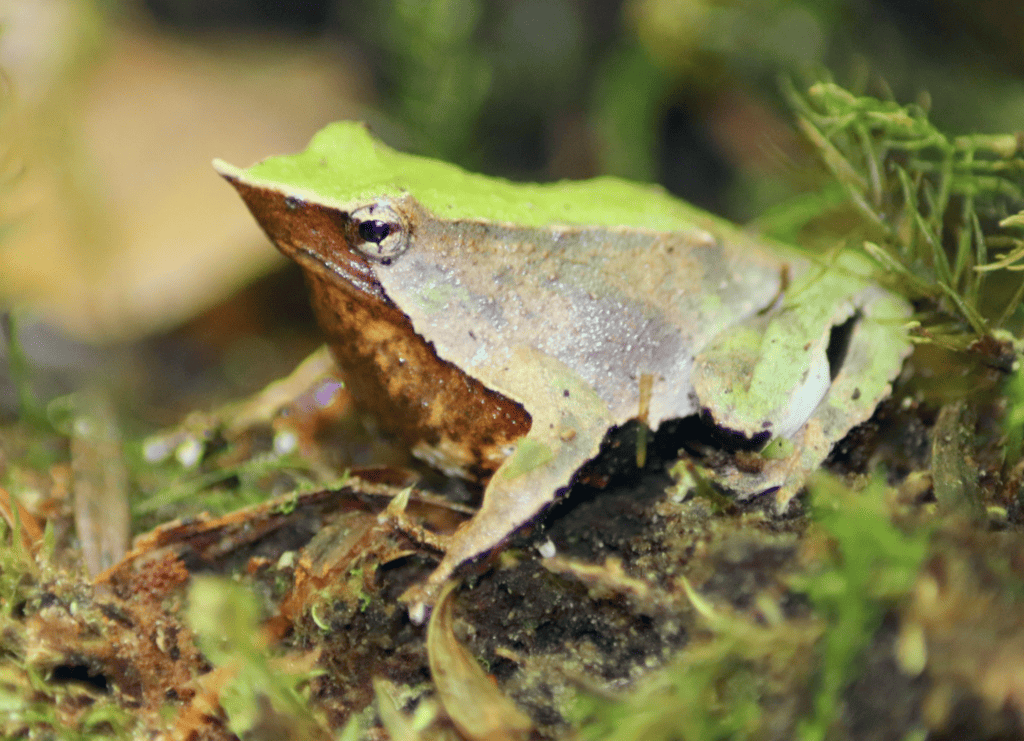
| Scientific Name | Rhinoderma darwinii |
| Where it Lives | Endemic to Chile and Argentina, found in temperate forests and grasslands |
| What it Eats | Insectivorous, feeding on small insects and invertebrates |
| Conservation Status | Endangered |
Fun Fact: Male Darwin’s frogs keep their young in their vocal sacs for 50-70 days.
Darwin’s frog is named after Charles Darwin, who discovered it on his ‘Voyage of Beagle.’ Darwin’s frogs are found in Chile and Argentina. But they can be hard to find, as they make themselves look like dried leaves.
19. Death Adder

| Scientific Name | Acanthophis spp |
| Where it Lives | Found in various regions of Australia and nearby islands |
| What it Eats | Carnivorous, primarily preying on small mammals, birds, and reptiles |
| Conservation Status | Not assessed |
Fun Fact: The Death Adder has the longest fangs of any Australian snake.
Death adders are native to Australia and Papua New Guinea. These snakes are good at blending into their surroundings.
20. Darwin’s Fox

| Scientific Name | Lycalopex fulvipes |
| Where it Lives | Endemic to Chile, found in forests and grasslands of Chiloé Island and nearby areas |
| What it Eats | Carnivorous, feeding on small mammals, birds, and insects |
| Conservation Status | Endangered |
Fun Fact: Darwin’s fox is endangered because humans used to hunt it for its pelt.
Darwin’s fox can be found in some parts of South America. Darwin’s foxes aren’t foxes; they just look like them.
Summary of Animals That Start With D
We’ve come to the end of the list of animals that start with the letter D, and we hope you enjoyed it! Here is another interesting one for animals that start with O and look at Animals with T. See you there.
Here is a list of all animals with letters:
- Animals That Start With A
- Animals That Start With B
- Animals That Start With C
- Animals That Start With E
- Animals That Start With F
- Animals That Start With G
- Animals That Start With H
- Animals That Start With I
- Animals That Start With J
- Animals That Start With K
- Animals That Start With L
- Animals That Start With M
- Animals That Start With N
- Animals That Start With O
- Animals That Start With P
- Animals That Start With Q
- Animals That Start With R
- Animals That Start With S
- Animals That Start With T
- Animals That Start With U
- Animals That Start With V
- Animals That Start With W
- Animals That Start With X
- Animals That Start With Y
- Animals That Start With Z
Thank you for reading!
Join our Forum for free today!

- These are The 5 Largest Great White Sharks Ever Recorded - July 19, 2024
- The Surprising Benefits of Big Game Hunting - July 18, 2024
- $100k+ Hunting Experiences The Most Expensive Animals to Pursue - July 17, 2024

